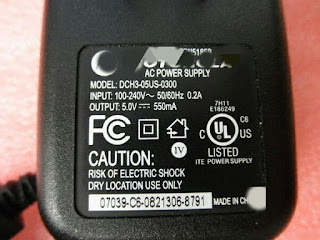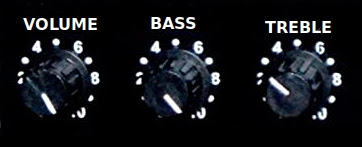West Bengal PSC Previous Year Physics Questions with Answers (Part- 2)
In this post we solve the previous year Physics questions of the West Bengal Public Service Commission (WBPSC). The questions are arranged topic wise. This is the part- 2 of this series.
In fact, this Physics series is the part of WBPSC Previous Year Science Questions with Solution series.
Light:
Q. Light waves are [WBPSC Miscellaneous Exam- 2012 (2nd)]
- Mechanical waves
- Longitudinal waves
- Electromagnetic waves
- None of the above
C.Electromagnetic waves
Explanation:
- Mechanical wave can not transmit energy through vacuum. E.g. Sound wave, water waves etc.
- Longitudinal wave is a wave in which the particles of the medium move parallel to the propagation of the wave. E.g. sound waves.
- Electromagnetic wave is created by both electric field and magnetic field. It can propagate through vacuum. E.g. light waves, radio waves.
Q. Scientist C.V. Raman discovered [WBPSC Miscellaneous Exam- 2018]
- Raman Effect
- Raman Ray
- Life of the tree
- X-ray
A.Raman Effect
Explanation: Scientist C. V. Raman discovered Raman Effect on 28th February, 1928. In India, National Science Day is observed on 28th February to remember this historic invention.
Q. Distorted vision (Astigmatism) can be corrected by using which one of the following lens? [WBPSC Miscellaneous Exam- 2018]
- Cylindrical lens
- Convex lens
- Concave lens
- Bifocal lens
A. Cylindrical lens
Explanation:
- Astigmatism is corrected by cylindrical lens.
- Hypermetropia (long-sightedness) is corrected by convex lens.
- Myopia (short-sightedness) is corrected by concave lens.
- Presbyopia is corrected by bifocal.
Q. What is Li-Fi system? [WBPSC Miscellaneous Exam- 2018]
- It is a traditional computer chip.
- It is system relies on centralised light antennas.
- It is universal turing machine.
- It is a single desktop computer.
B. It is system relies on centralised light antennas.
Explanation: Li-Fi (Light Fidelity) is wireless technology that uses light rather than radio frequency to transmit data.
Q. Who designed the Polaroid instant camera? [WBPSC Miscellaneous Exam- 2018]
- Edwin Land
- William Clark
- Michael Brack
- Sir White
A. Edwin Land
Explanation: Edwin Herbert Land was an American scientist and inventor. He was the co-founder of Polaroid Corporation. Using Polaroid instant camera, it was possible to take picture and develop in 60 seconds or less.
Q. The solar cooker works on the same principle as
[WBCS Preliminary- 2015, 2021]
- Bolometer
- Pyrometer
- Greenhouse
- Galvanometer
C. Greenhouse
Explanation:
- In solar cooker principles of reflection, concentration, absorption and greenhouse effect are used to convert sunlight to heat energy.
- Bolometer is used to measure the power of the incident electromagnetic radiation.
- Pyrometer is used to measure temperature remotely by measuring radiation from the object.
- Galvanometer is a device which can detect and measure current in an electrical circuit.
- In the question of 2021 there was option "Solar PV cell" instead of "Galvanometer".
- Solar PV cell or Solar Photovoltaic cell is an device which converts light into electricity.
Q. The image formed in plane mirror is [WBCS Preliminary- 2015]
- real and erect
- virtual and inverted
- virtual and erect
- real and inverted
C. Virtual and erect
Explanation:
- Virtual image means light rays do not meet (converge) to form the image but appear to meet (appear to diverge)/
- Real image means light rays meet (converge) to form the image.
- Real image are formed on the screen but for the virtual image there is no need of screen.
Q. "Red" is used as danger signal because [WBCS Preliminary- 2017]
- blood is red
- red light is scattered least by the air molecule
- red colour is easily available
- red colour is soothing for eye
B. red colour is scattered least by the air molecule.
Explanation:
- Generally this type of scattering is called Rayleigh scattering. The intensity of the scattering is inversely proportionally to the fourth power of wave length [i.e. I∝(1/λ4)].
- In visible light spectrum Red colour has longest wave length. That is why scattering is the least for Red colour.
Q. A clock is fixed on the wall shows a time 4.25. The time shown by the image on a plane mirror fixed to the opposite wall will be [WBCS Preliminary- 2018]
- 8.35
- 7.25
- 7.35
- 8.25
C. 7.35
Explanation: In plane mirror, the image formed is laterally-inverted. If a person is reflected in a plane mirror, the mage of his left hand appears to be the right hand of the image.
So, in this problem the image of the clock will be laterally inverted.
Q. Red + Green + Blue = ? [WBCS Preliminary- 2018]
- White
- Black
- Maroon
- Blue
A. White
Explanation: From the following diagram we can determine the colour combination of primary colour.
Q. Short sight defect could be corrected by a [WBCS Preliminary- 2018]
- Convex lens
- Concave lens
- Converging lens
- None of the above
B.Concave lens
Explanation:
- Convex lens is used to correct long-sightedness (Hypermetropia).
- Concave lens is used to correct short-sightedness (Myopia).
- Converging lens is the lens which converge the incident rays e.g. biconvex lens.
Q. A camera always has [WBCS Preliminary- 2019]
- Lens
- Reels
- Flash
- Stand
A. Lens
Explanation: A camera is device which can capture image. For capturing a image a camera have to have lens.
Q. Twinkling of stars is on account of
[WBCS Preliminary- 2019]
- large distance of stars and storms in air
- rotation of earth
- large size of stars
- large distance of stars and fluctuations in the density of air
D. large distance of stars and fluctuations in the density of air
Explanation: Density of air varies throughout the atmosphere mainly due to temperature and gravitational force of earth. Hence, the light rays coming from the stars refracted (bent) randomly many times through out the atmosphere before reaching our eyes. Hence, intensity of the light rays varies. That is why, we see the stars twinkling. But in reality stars do not twinkling.
Q. The spectrum of colour in Compact Disc (CD) is due to
[WBCS Preliminary- 2021]
- Refraction
- Reflection
- Diffraction
- Polarization
C. Diffraction
Explanation: Diffraction refers to various phenomenon that occur when a wave encounters an obstacle or opening.
In Compact Disc (CD), closely spaced tracks act as diffraction grating. That is why, spectrum of colour is formed.
Q. The power of a lens is +2.0D. The focal length of the lens and its nature are
[WBCS Preliminary- 2021]
- 50 cm, concave
- 50 cm, convex
- 100 cm, convex
- 100 cm, concave
B. 50 cm, convex
Explanation:
Power of lens is measured in Diopter(D).
-ve D means Concave lens.
Let, the focal length be f.
So, 1/f=2
Or, f=(1/2)
Therefore, focal length
=(1/2) m
=(1/2)✕100 cm
=50 cm.
Since, the given power is +Ve, the lens is a Convex lens..
Therefore, the focal length of the lens and its nature are 50cm, convex.
Sound:
Q. "RADAR" stands for [WBCS Preliminary- 2017]
- Radio Detection and Ranging
- Ready Advanced Appliance for Ranging
- Range Detection Appliance for Airplane Ranging
- Ready Advanced Airplane Ranging
A. Radio Detection and Ranging
Explanation: RADAR is a detection system that uses radio waves to determine the distance (range), angle or velocity of the object. It is used in aircraft, ships etc.
Q. The speed of the sound is faster in [WBCS Preliminary- 2018]
- solids
- liquids
- gases
- vacuum
A. solids
Explanation: Sound speed faster to slower: solid > liquid > gas. Sound wave can not travel through vacuum.
Q. Voice of your friend can be recognized by its [WBCS Preliminary- 2019]
- pitch
- quality
- intensity
- velocity
B.quality
Explanation:
- The quality of sound helps to distinguish the type of the source of the sound.
- Pitch: It is the characteristics of sound by which we can distinguish shrill sound and flat sound. Pitch depends on the frequency of the sound. Higher pitch means higher frequency of sound.
- Intensity: Amount of energy flowing per unit time through a unit area perpendicular to the direction of the sound propagation. It depends on the amplitude of the sound wave.
- Velocity: Displacement in unit time is known as velocity.
Q. Noise pollution is created if noise is in excess to [WBCS Preliminary- 2019]
- 70-75 dB
- 50-60 dB
- 80-99 dB
- 40-45 dB
C.80-99 dB
Explanation: Normal conversation is about 60 dB. In general sounds above 85 dB are harmful.
Atomic Structure:
Q. An atom of an element differs from an atom of one of its isotopes in the number of [WBPSC Miscellaneous Exam- 2012]
- Neutrons in the nucleus
- Proton in nucleus
- Valence electron
- Proton outside the nucleus
A. Neutrons in the nucleus
Explanation: Isotopes are atoms of same element that have same number of neutrons but different number of neutrons in the nucleus.
visit the WBPSC Previous Year Physics Questions with Answers Part-1
Visit WBPSC Previous Physics Question with Answers Part-3
Visit WBPSC Previous Year Physics Questions with Answers Part-4
WBPSC Previous Year COMPUTER Question with Solution
WBPSC Previous Year BIOLOGY Questions with Answers
WBPSC Previous Year SCIENCE Series
Wish You Meet Your Goal. Thank You









Comments
Post a Comment